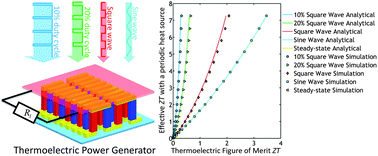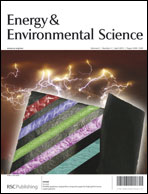We show that the use of a periodic heat source, instead of a constant heat source, can improve the conversion efficiency of a thermoelectric power generator (TPG). A periodic heat source drives a periodic temperature difference across the thermoelectric with an amplitude ΔT. While the time average of ΔT is identical to the temperature difference under a constant heat source with equivalent energy input, the time average of (ΔT)2 is larger, resulting in improved conversion efficiency. Here we present experimental measurements on a commercial thermoelectric device (bismuth telluride based) to validate analytical and numerical models. These models show that maximum efficiency is achieved when the period of the heat source is much larger than the thermal time constant of the TPG. Under this quasi-steady condition, the thermoelectric figure of merit ZT is still the relevant parameter for material optimization. A conventional thermoelectric material with ZT = 1, operated with sinusoidal and square-wave heat sources (ΔT = 100 K, TCold = 300 K), can achieve 140% and 180% of the constant heat source efficiency; or otherwise stated, can perform like advanced materials with ZT of 1.6 and 2.8. Even greater improvement, inaccessible through materials-based ZT enhancements, can be achieved with low duty cycle heat sources.

You have access to this article
 Please wait while we load your content...
Something went wrong. Try again?
Please wait while we load your content...
Something went wrong. Try again?


 Please wait while we load your content...
Please wait while we load your content...